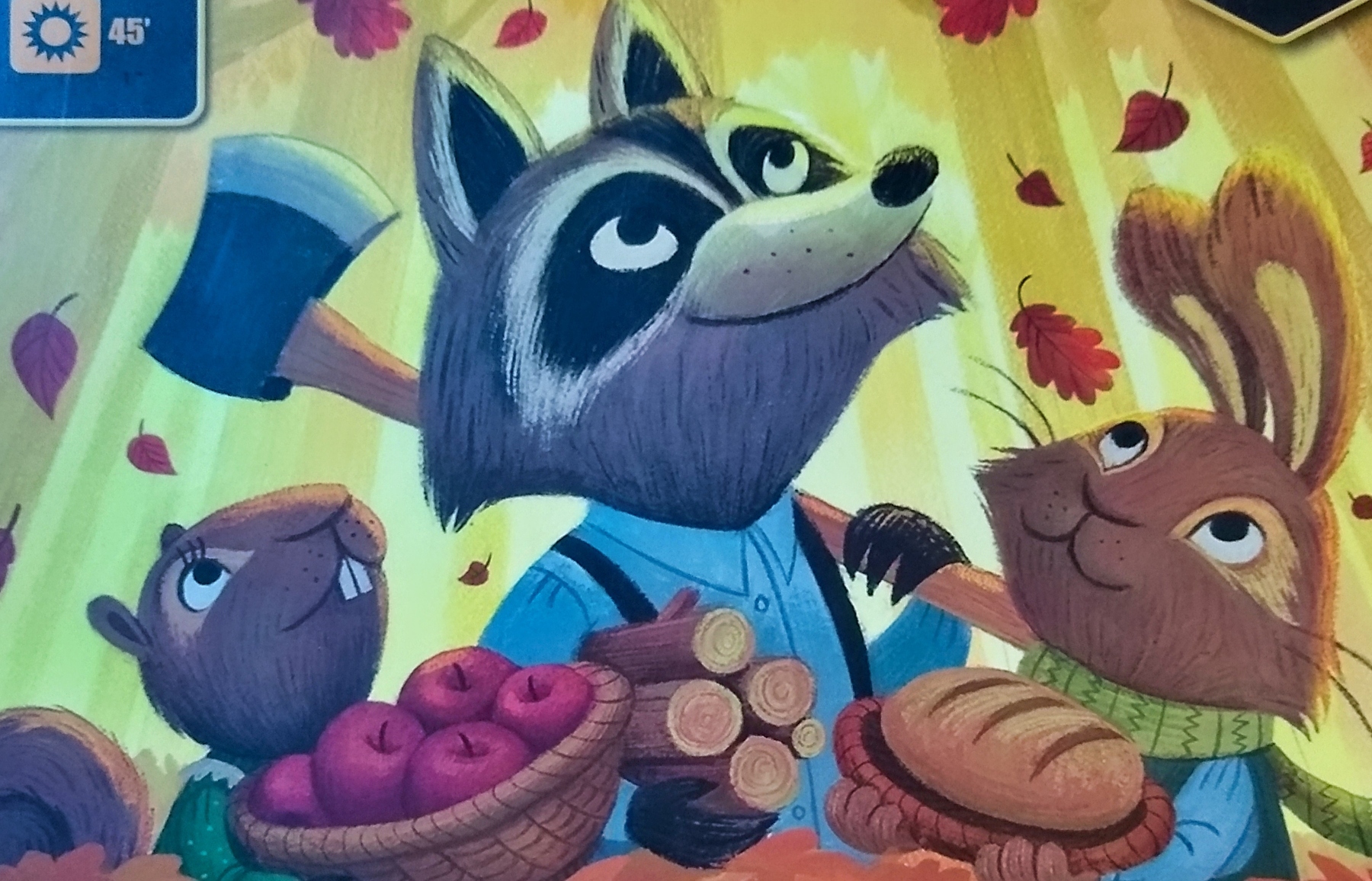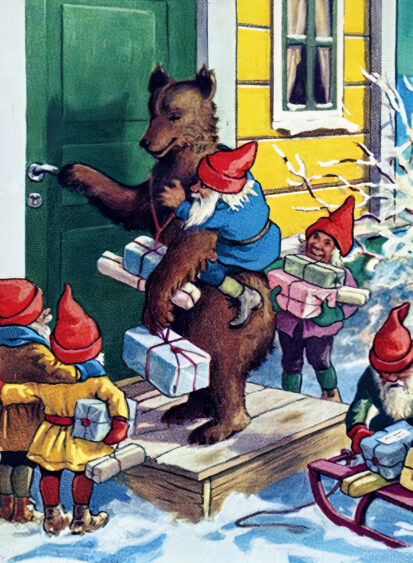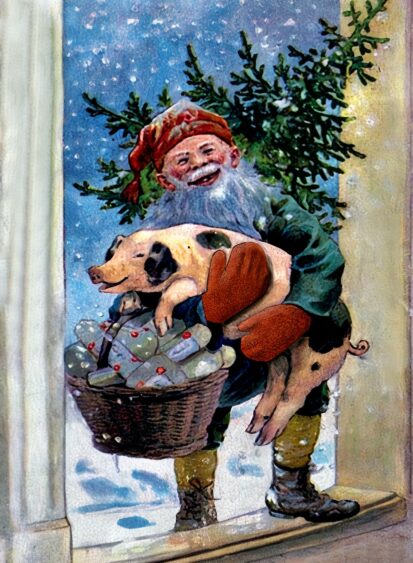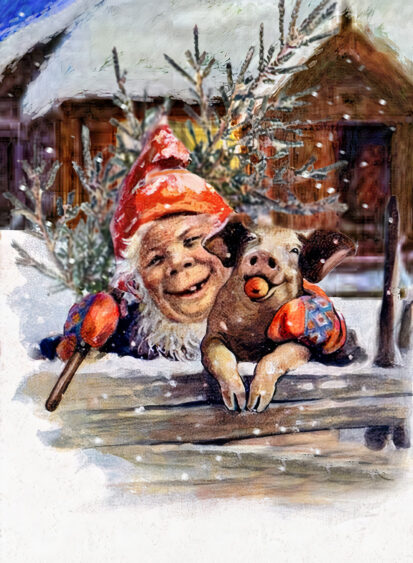Over the weekend, a friend and fellow designer ran a game day aimed at playing games that he’d purchased but never played. Creature Comforts fell into that category. It has a really cute, catchy box but so-so ratings. We ended up not playing the entire game because we found the mechanics too fiddly. But yup, the thing that got it to the table was the cute art.
It’s all about the mammals
There’s something about the wide-eyed, harmless-looking faces of mammals that draws people in. I can’t even count the number of times that the players sighed, “Awwwww!” in that “what a cute little baby, is he already spoken for?” sounding voice.
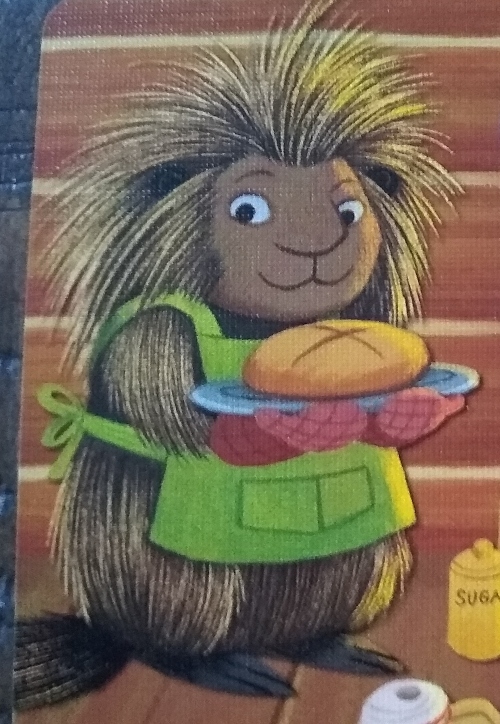

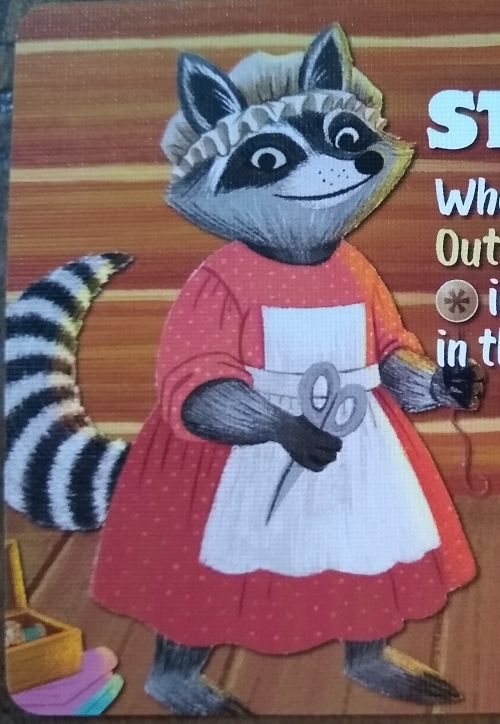
Many details help to make the player feel comfy with these animals:
- These are happy animals.
- All of them are smiling.
- All of their ears, where visible, are perky and upright.
- All of the creatures’ eyes are visible, large, and looking at the viewer.
- The colors are bright but not loud. They retain some of the desaturation typical of nature, especially on the animals’ fur.
- The fur’s texture (or porcupine spikes) is soft, like a plush animal.
- All of the creatures have props, such as bread or tools, to humanize them.
Make ’em cozy
It’s not just the animals themselves that create comfort. The player mats depict scenes of inviting coziness.
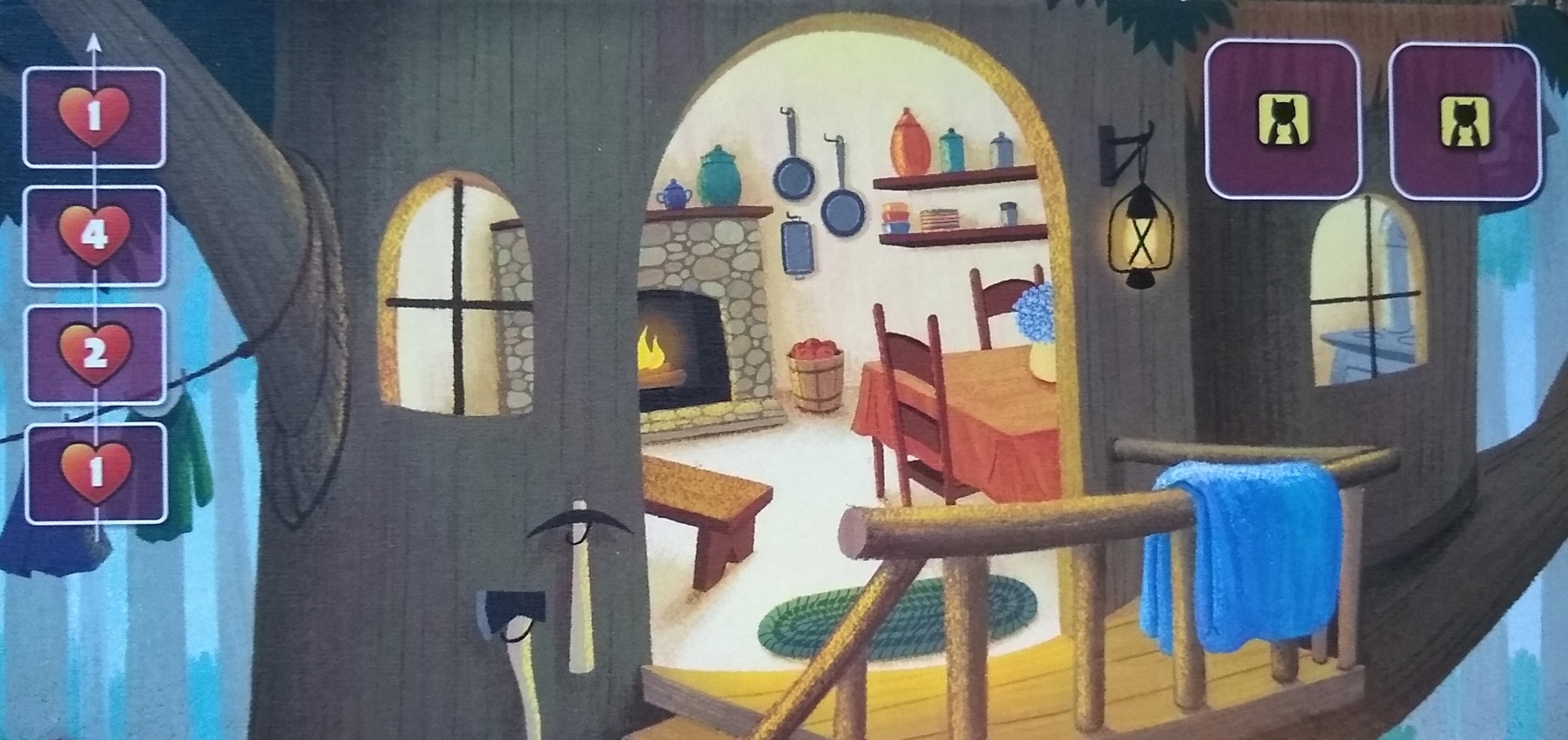
These mats amplify feelings of coziness:
- Motifs of light and fire recur throughout these mats (similar to Nystrom’s illustrations of Tomten).
- The natural materials again have lovely, desaturated colors, while the humanizing props pop with a bit of color.
- Each mat depicts a room, via its door, thereby connoting protection without sacrificing a sense of welcome.
The feeling of coziness agrees with the mechanics, in that players spend the entire game collecting cozy places and items (worth victory points) to make their animal family comfortable for the winter.
Fox in the Forest Duet
We find similar imagery on the cover and cards of the cooperative two-player game, Fox in the Forest Duet.


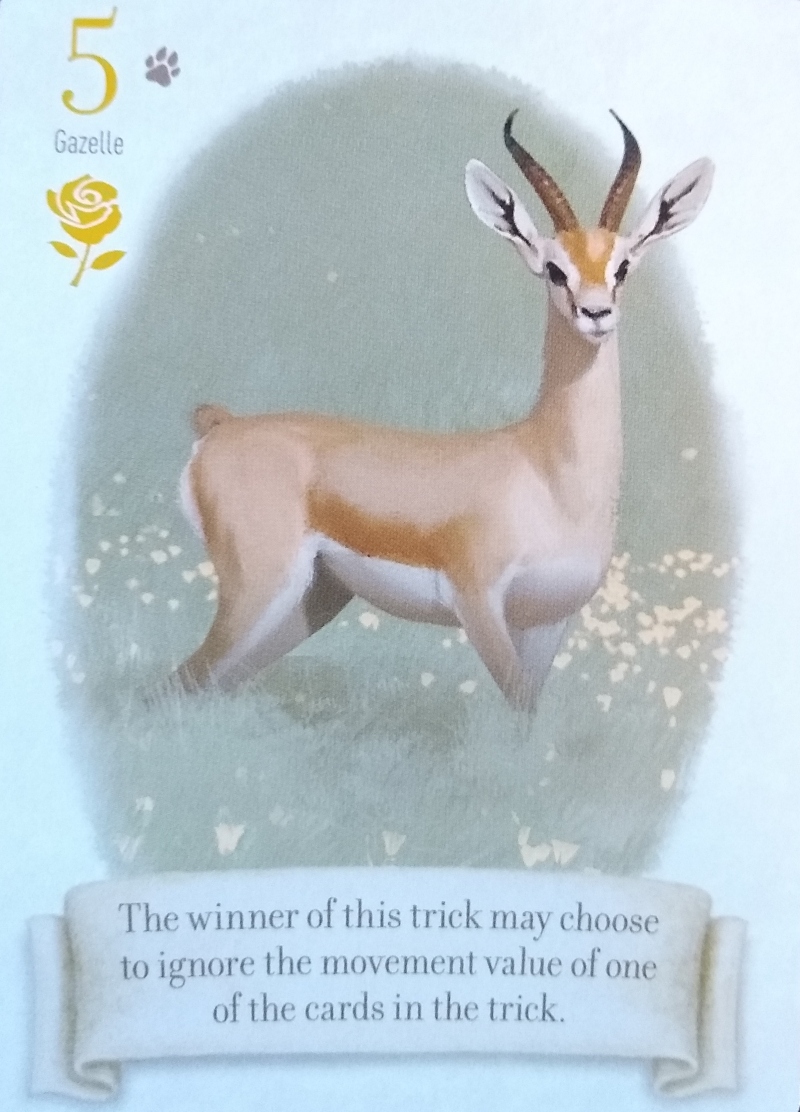
A few details that I notice:
- Again, the animals’ fur is soft and natural-colored.
- In this game, the eyes are not open and wide.
- The animals have no props to humanize them.
- Instead, the relationship between the foxes encourages the viewer to project human-like characteristics (anthropomorphization).
- On the cover, they appear to cuddle. In the “3” card, the crouching fox watches with love over the resting fox.
- The foxes’ mouths curve in a smile-like arc. (Is this really how foxes smile in real life?)
The feelings of care and concern agree with the mechanics, in that players cooperatively play card tricks to collect treasure.
Killer Bunnies
And for the sake of contrast, let’s take a look at some art that features mammals of an entirely different persuasion.
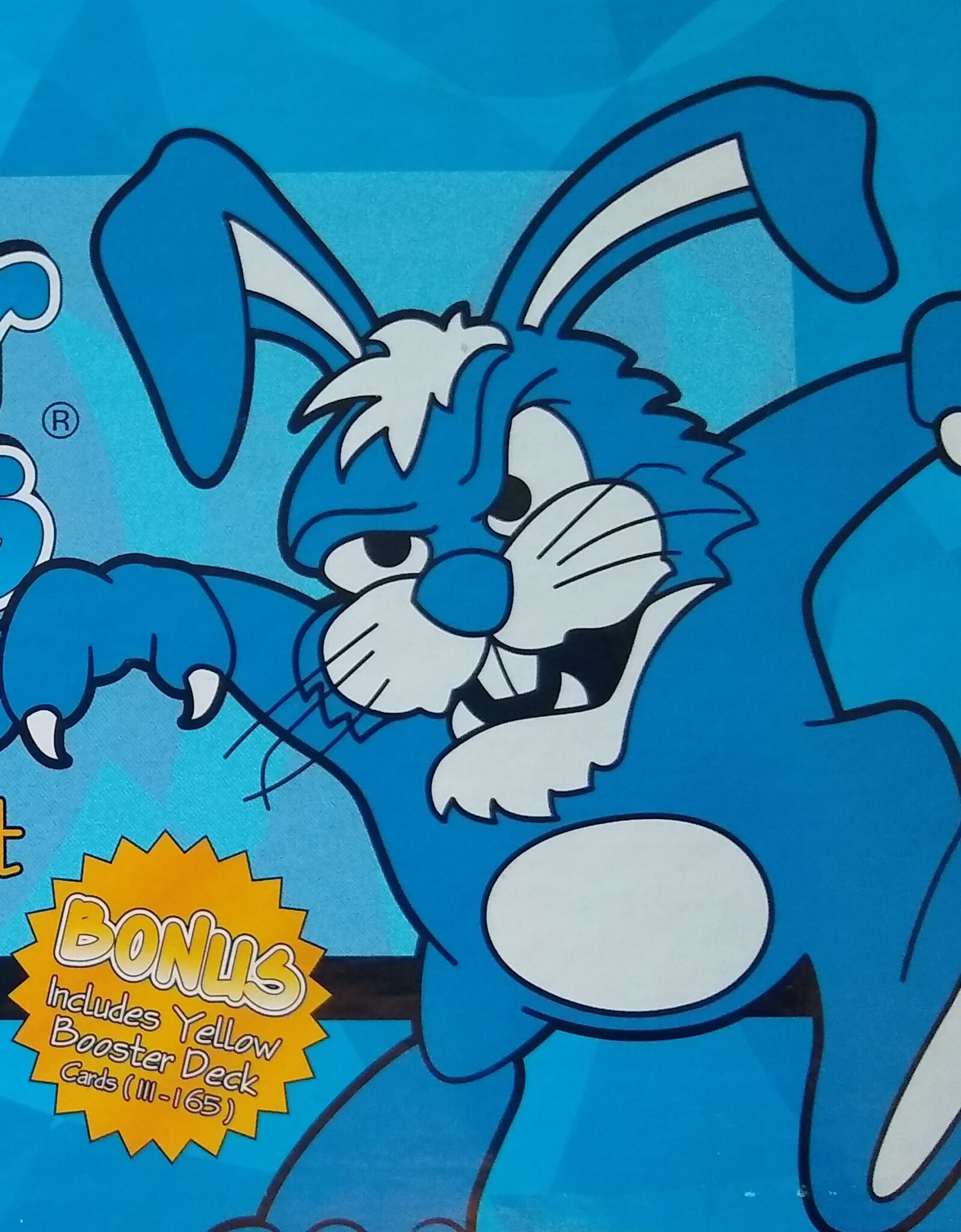
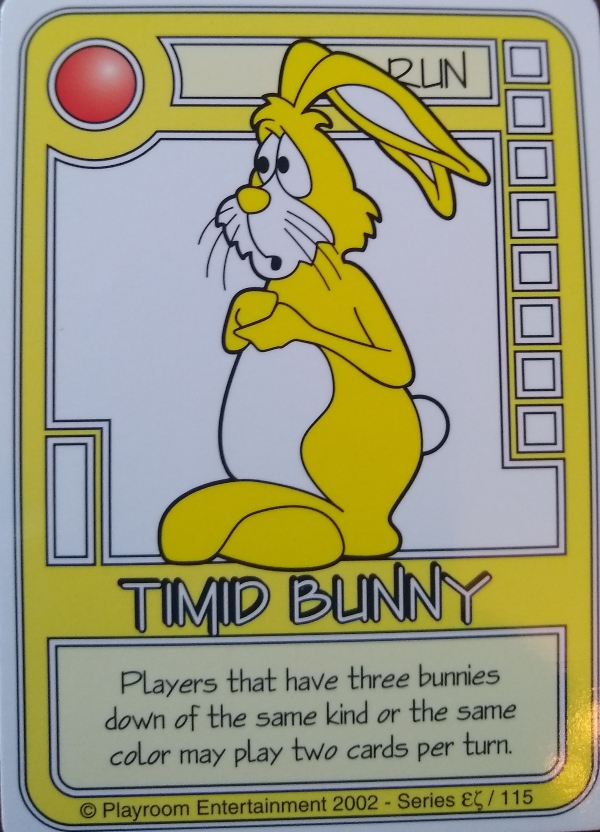

A few details that I notice:
- The colors are unnatural. The fur is untextured.
- The animals don’t have happy smiles.
- The cover bunny looks very angry.
- The timid bunny looks timid.
- The Baker Street bunny also looks timid.
- These bunnies’ evident emotions help the viewer to project human-like characteristics.
- Maintaining a cartoon flavor softens the blow of the truly horrific things that happen to the bunnies in this game (similar to the artistic positioning in Munchkin Fu)
I haven’t played this game, but the illustrations make me think that it’s going to have a lot of Take-That. And, indeed, the Baker Street card mentions something about causing other players to lose a turn.
Notes to self
Weefolk differ in how kind they are to one another — and to the animals that they encounter. For example, those who are nasty (such as Red Caps and Goblins) might see any animals fighting back (potentially as protagonists) in an illustrated style resembling that of Killer Bunnies.
Gnomes, on the other hand, absolutely adore their animals.
Future games could show gnomes physically interacting with their animal friends as in these Tomten illustrations.
The animals have natural tones, visible fur, visible eyes, and obvious smiles.
I could absolutely see a box featuring an image like the ones here that involve bears!
